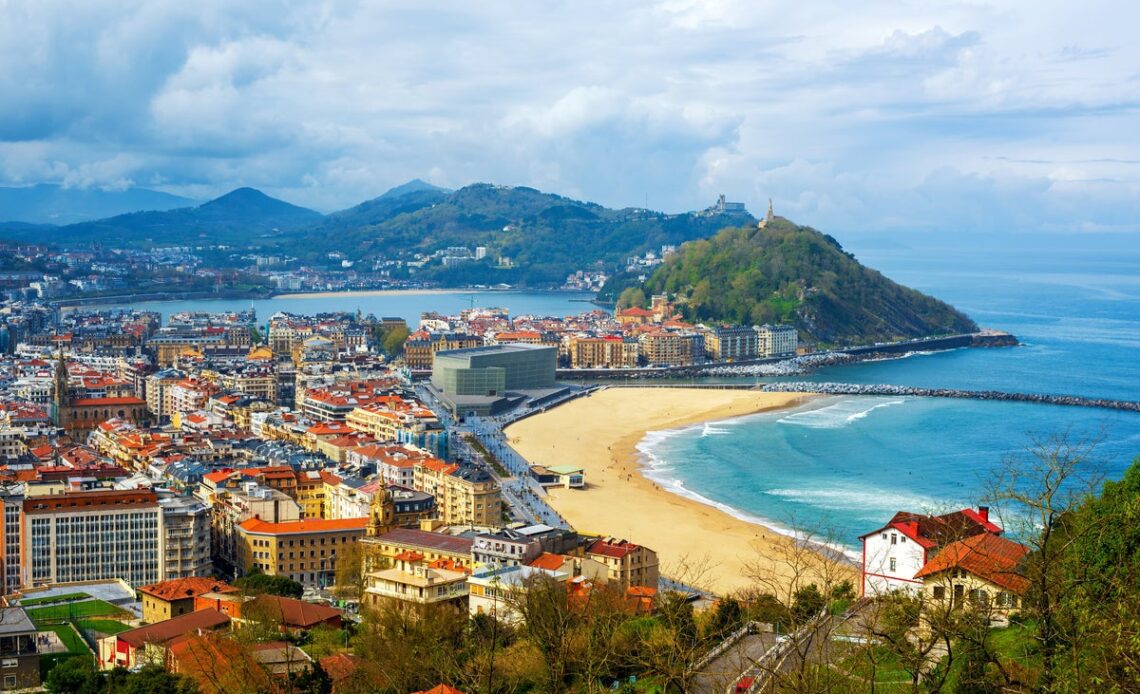The waves crashing against surly cliffs, gracefully sweeping bays and verdant, landmark-capped hills around San Sebastián are the kind of backdrop that would elevate even the tackiest seaside resort. But San Sebastián is a different breed, concocted to satisfy the exacting demands of the Spanish Royal Court, which began summering in the city from the mid-19th century, when Queen Isabella II was ordered to bathe in the Bay of Biscay waters to treat a skin condition. The result of that royal rash is a graceful Belle Epoque city that has aged beautifully, fringing the wide, sandy sweep of La Concha Bay.
By the mid-20th century, the city’s stock declined somewhat, but San Sebastián never stopped trying to impress, particularly when it came to the inventive tapas-style pintxos. To gourmands, this is the unrivalled capital of Spain’s food scene, where top chefs are treated with the reverence of A-list celebrities, and where you’ll find the world’s highest ratio of Michelin stars per capita. The bar is raised so high that even the drabbest neighbourhood eateries keep culinary pace with the big players. Ingredients that sound exotic elsewhere, such as sea urchin and foie gras, are bandied about like they were flour and tomatoes.
It would be easy to stop at the food and miss out on the wealth of other experiences offered in this cultured city, but with museums exploring the region’s maritime and shipbuilding pedigree, hikes to hilltop viewpoints and some excellent surfing on the wild seas, there’s plenty of intrigue and entertainment to cram into your trip.
Read more Spain travel:
What to do
Get up high
Discover incredible views from Monte Igueldo tower
(Getty Images)
The majestic La Concha Bay’s entrance is presided over by two steep hills: Monte Urgull to the east and Monte Igueldo to the west. The former remains mostly forested, despite the city’s Old Town, Parte Vieja, and main port nuzzling right up to its lower reaches. Shaded paths zigzag through the trees and battlements of the 12th-century Castillo de la Mota, which caps Monte Urgull. The castle contains Urgulleko Historiaren Etxea, a small museum detailing the city’s history in Spanish, although the highlight is upstairs: the balcony with its lofty statue of Christ, which looks out over San Sebastián to the mountains beyond.
On the opposite side of the bay is the…
Click Here to Read the Full Original Article at The Independent Travel…
